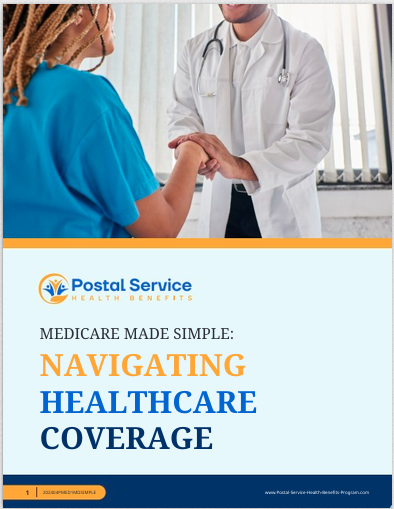Key Takeaways
- USPS employees and retirees must transition from FEHB to PSHB starting in January 2025, which includes mandatory Medicare Part B enrollment for certain retirees.
- Preparing for the transition during the 2024 Open Season is crucial for ensuring appropriate healthcare coverage under the new PSHB program.
What’s the Deal with Medicare and PSHB? USPS Employees, Here’s What You Need to Know
The upcoming transition from the Federal Employees Health Benefits (FEHB) program to the Postal Service Health Benefits (PSHB) program is a significant shift for USPS employees and retirees. Established under the Postal Service Reform Act of 2022, this new program will take effect on January 1, 2025, fundamentally altering how USPS workers and retirees receive health insurance. Understanding the implications of this transition is crucial, especially concerning Medicare enrollment and the changes in coverage that will affect thousands of current and former postal employees.
The Transition from FEHB to PSHB: Key Dates and What to Expect
The PSHB program is set to officially replace the FEHB program for USPS employees, retirees, and their eligible family members beginning January 1, 2025. This transition means that during the Open Season from mid-November to mid-December 2024, all USPS employees and retirees must choose a new PSHB plan or be automatically enrolled in a plan that mirrors their current FEHB coverage. This automatic enrollment is designed to ensure that no one loses coverage during the transition, but it may not be the best option for everyone, making it essential for individuals to actively participate in the Open Season to choose the most suitable plan for their needs.
Additionally, the new PSHB program will introduce more standardized plan options compared to the broader variety offered under FEHB. This could mean fewer choices, making it all the more important for USPS employees and retirees to carefully review their options to select the plan that best meets their healthcare needs. Understanding the specific details of each available plan will be critical in making an informed decision during the transition period.
The Role of Medicare: Why It’s More Important Than Ever
For USPS retirees who are eligible for Medicare, the transition to PSHB brings new obligations and considerations. One of the most significant changes under the PSHB program is the requirement for retirees and their eligible family members who are 64 years old or younger on December 31, 2024, to enroll in Medicare Part B. This mandate is a key component of the PSHB program, intended to integrate with Medicare benefits to provide comprehensive coverage and potentially lower out-of-pocket costs for retirees.
The PSHB program also includes provisions for a special enrollment period (SEP) for eligible USPS retirees and their family members who are not currently enrolled in Medicare Part B. This SEP, running from April 1, 2024, through September 30, 2024, allows these individuals to enroll in Medicare Part B without facing the usual late enrollment penalties. Taking advantage of this SEP is crucial for retirees to avoid increased costs and ensure their eligibility for PSHB benefits starting in 2025.
It’s also important to note that under the new PSHB plans, prescription drug coverage will be integrated with Medicare Part D. This means that retirees who are eligible for Medicare will need to understand how their prescription drug coverage will be handled under the new PSHB plans, especially since these plans are required to offer Medicare Part D coverage as part of the overall benefits package. This integration aims to streamline coverage and reduce out-of-pocket expenses for retirees, but it also adds a layer of complexity that retirees need to navigate carefully.
How the PSHB Program Differs from FEHB
While the PSHB program retains some similarities to the FEHB program, several critical differences will impact USPS employees and retirees. These differences highlight the need for careful planning and understanding of the new system:
- Mandatory Medicare Part B Enrollment: As mentioned earlier, one of the most significant changes is the mandatory enrollment in Medicare Part B for certain retirees and their eligible family members. This requirement is a departure from the previous system under FEHB, where Medicare enrollment was optional but recommended. The integration of Medicare Part B with PSHB plans is designed to optimize coverage and reduce out-of-pocket costs, but it also means that retirees must be prepared to manage the additional Medicare Part B premiums.
- Standardized Plan Offerings: PSHB plans will be more standardized compared to the variety offered under FEHB. This means fewer options for USPS employees and retirees, which could simplify the decision-making process but also limit flexibility. The standardized plans are designed to provide comprehensive coverage, but individuals will need to carefully assess which plan best meets their healthcare needs, particularly if they have specific medical conditions or treatment requirements.
- Cost Implications: While the exact premiums and cost-sharing details for PSHB plans are still being finalized, it is expected that the integration with Medicare will influence the overall cost structure. Retirees who are required to enroll in Medicare Part B may see changes in their premium obligations, which could impact their overall healthcare costs. It is essential for retirees to consider these potential changes when evaluating their options under the new PSHB program.
- Prescription Drug Coverage Integration: The integration of Medicare Part D prescription drug coverage into PSHB plans is another significant change. This integration is intended to provide more comprehensive coverage and reduce out-of-pocket expenses for retirees, but it also requires a clear understanding of how the new system will work. Retirees will need to review their current prescription drug needs and ensure that their chosen PSHB plan offers adequate coverage under the integrated Medicare Part D benefits.
What USPS Employees Should Do Now
With the implementation of the PSHB program on the horizon, USPS employees and retirees need to take proactive steps to prepare for the transition:
- Review Your Current Health Coverage: Start by thoroughly reviewing your current FEHB plan to understand what coverage you have and how it compares to the upcoming PSHB options. Consider how your healthcare needs might change over the next few years, especially if you are nearing retirement age or have ongoing medical conditions.
- Educate Yourself on Medicare Enrollment: If you or your dependents are nearing the age of 65 or have previously delayed enrolling in Medicare Part B, it’s crucial to understand the implications of the mandatory enrollment under the PSHB program. The special enrollment period in 2024 offers a unique opportunity to sign up for Medicare Part B without penalties, ensuring that you maintain eligibility for PSHB benefits.
- Stay Informed: Keep up to date with the latest communications from USPS and OPM regarding the PSHB program. This includes announcements about plan options, premium rates, and details on the integration of Medicare benefits. The more informed you are, the better equipped you’ll be to make decisions during the 2024 Open Season.
- Consult a Licensed Insurance Agent: If you’re unsure about how the transition to PSHB will affect your healthcare coverage, consider consulting with a licensed insurance agent or a financial advisor who specializes in federal employee benefits. These professionals can help you navigate the complexities of the new system and provide personalized advice based on your specific situation.
Preparing for the Future
As the USPS prepares to transition from FEHB to PSHB, it’s important for employees and retirees to be proactive and informed. The new PSHB program will bring changes to how health benefits are administered, particularly in terms of Medicare integration and plan standardization. By understanding the changes ahead, evaluating your health insurance needs, and taking advantage of the special enrollment period, you can ensure a smooth transition to the new PSHB program and maintain comprehensive healthcare coverage.
The introduction of the PSHB program represents a significant shift in how USPS employees and retirees manage their health benefits. While change can often be daunting, with careful planning and the right resources, USPS employees can navigate this transition successfully, ensuring that their healthcare needs are met both now and in the future. As the 2025 implementation date approaches, staying informed and prepared will be key to making the most of the new PSHB program and securing your health and financial well-being.
Contact Information:
Email: [email protected]
Phone: 7025558901






